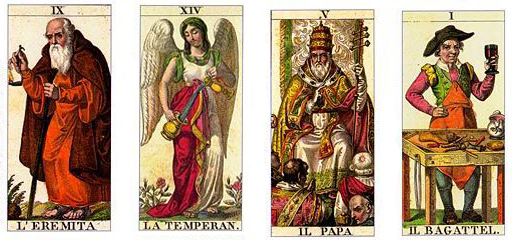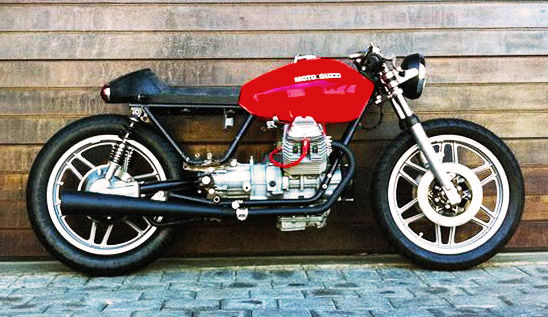When someone mentions Tarot cards today, it conjures up images of fortune-telling, the mysterious prediction of future events and black magic. An aura of the unknown surrounds them, but the origin and history of the card decks have less to do with the mystical and more to do with games of leisure.
There are stories that the very first to use the cards as a form of divination were by the ancient Egyptians, whose “tarots” were an instrument for high priests to read and interpret the Book of Thoth. This however is utter nonsense. Others have postulated that the Chinese were the first to introduce cards to the world in a book used for divination that dates back three thousand years. It sounds like a compelling story, but there is no substance to it; none at all.
Tarot cards originated in northern Italy during the late 14th century. The oldest surviving set, known as the Visconti-Sforza deck, was created for the Duke of Milan’s family around 1440. The cards were used to play a bridge-like game called Trionfa (Triumphs). It introduced additional cards to the existing deck that could triumph over other cards, for example, to change suits. This is where the bridge term ‘trump’ originated. In 1449, a Milanese army captain, Jacopo Antonio Marcello, wrote of the cards, calling the deck carte de’ trionfi. He also included a short treatise on the game written by Marziano da Tortona, the personal secretary to the Duke of Milan, Filippo Maria Visconti. A decade later, Matteo Maria Boiardo published Il Capitolo del Gioco dei Tarocchi, the guide to a game consisting of 78 cards that was to become incredibly popular all over the peninsula. Among the most popular decks were those of Venezia, the Tarocchino of Bologna (a 62-card deck lacking the 2, 3, 4 and 5 cards) and the Minchiate of Florence, which added 20 cards to the original 78, including the Cardinal, the 12 signs of the zodiac, the four elements and the three theological virtues.
The game evolved into the game Tarcho, which in time became Taricchio. The games were popular among nobles and other people of leisure. The cards’ fanciful images were inspired by the costumed figures who participated in carnevale.
The Taricchio (and tarot deck) has four suits – batons, coins, swords and cups, the same that are still used in traditional Italian playing card decks. Each suit contains 14 cards; ten pip cards numbering from one (or Ace) to ten and four face cards (King, Queen, Cavalier and Knave). In addition, the tarot has a separate 21-card trump suit as well as a single card known as the Fool. Taricchio cards are still used throughout Italy and much of Europe to play conventional card games without occult associations.
Because the earliest tarot cards were hand-painted, the number of the decks produced was rather small. It was only after the invention and subsequent broad use of the printing press that mass production of cards became possible. The expansion of tarot outside of Italy, first to France and Switzerland, occurred during the Italian Wars. The most important tarot pattern used in those two countries is called the Tarot of Marseilles, but it is actually of Milanese origin.
The cards were not regarded as mystical until the late 18th century, when the occult came into vogue. Tarot packs began to be used in cartomancy – the practice of fortune-telling using cards. This led to the development of custom card decks used for occult purposes.
The earliest evidence of a tarot deck used for cartomancy comes from an anonymous manuscript from around 1750, which documents rudimentary divinatory meanings for the cards of the Tarocco Bolognese. The popularization of esoteric tarot is credited to Antoine Court and Jean-Baptiste Alliette (Etteilla) in Paris during the 1780s, both of whom used the Milanese-derived Tarot of Marseilles.
The 78-card tarot deck has two distinct parts: The Major Arcana (greater secrets), or trump cards, consisting of 22 cards without suits: The Magician, The High Priestess, The Empress, The Emperor, The Hierophant, The Lovers, The Chariot, Strength, The Hermit, Wheel of Fortune, Justice, The Hanged Man, Death, Temperance, The Devil, The Tower, The Star, The Moon, The Sun, Judgement, The World and The Fool. The cards are numbered using Roman numerals from I to XXI. The Fool is the only unnumbered card, sometimes placed at the beginning of the deck as 0 or at the end as XXII. The Minor Arcana (lesser secrets) consists of 56 cards, divided into four suits of 14 cards each.
It was Italian poet Francesco Petrarca, commonly known as Petrarch, whose allegory and symbology figures prominently into the cards of the Tarocchino, such as Trionfi dell’Amore (the Lovers) and della Castità (which became Temperance) in the major arcana and della Morte (card XIII), della Fama (card XXI) del Tempo (card XI) and Eternità (card XIX) of the minor arcana. Trionfi at the time of Petrarch were a popular show, made of complex allegorical floats. Today, almost 650 years after his death, the imagery and allegorical references of Petrarch continue to this day in the floats found throughout Italy during Carnevale.





